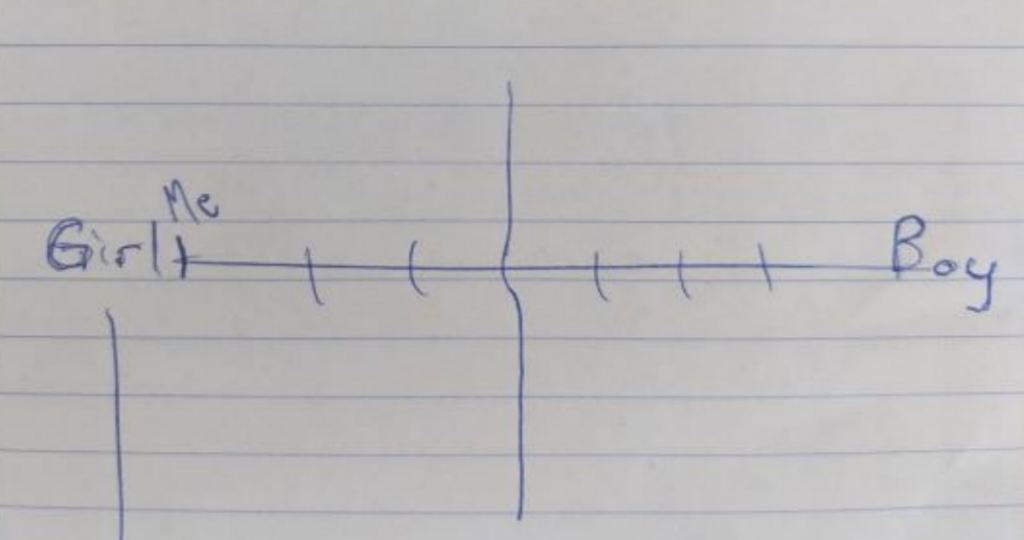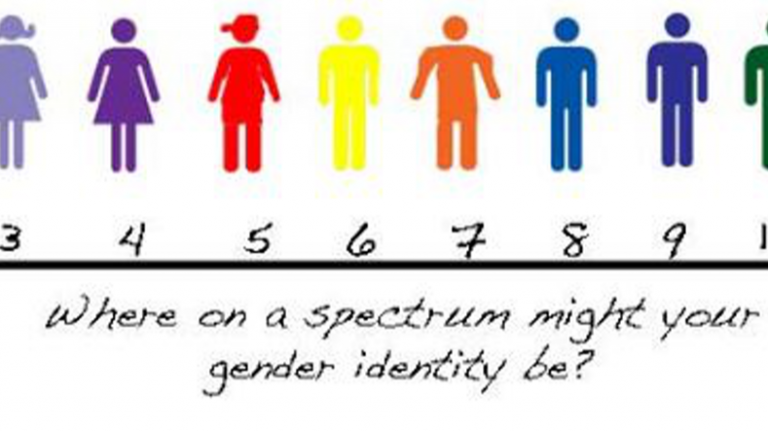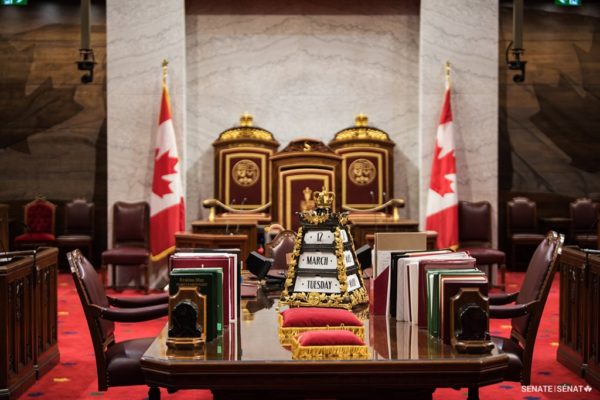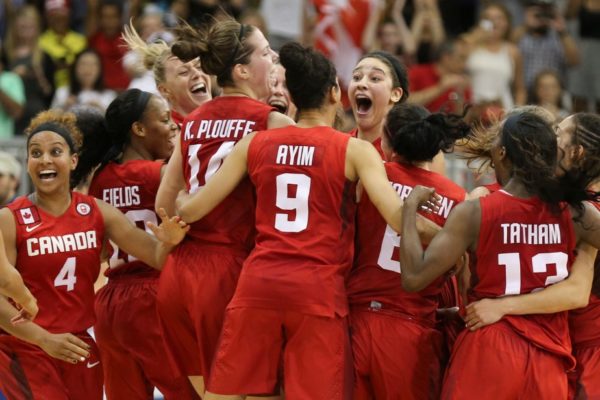An update on my daughter’s hearing at the Ontario Human Rights Tribunal
My daughter’s human rights case was finally heard earlier this spring. We are waiting for the decision and expect it sometime this summer. What happened is still a raw and painful topic for us. Our daughter – now age 11, still recalls that her teachers’ lessons were very upsetting to her.
When we consulted a lawyer 4 years ago about trying to find some resolution for what happened to our daughter, we were told that we may have a case for discrimination because the only option the school provided to us was to have our daughter removed from her Grade 1 class when lessons on gender came up. We went ahead with a case because we wanted her voice to be heard, and because we would have an avenue to request a public interest remedy that could help prevent this kind of situation from happening to others. If the Tribunal finds that the school board is liable for discrimination based on sex, gender identity or both, they can direct the school board to make revisions to their policies.
One benefit of the hearing for us is that we were finally able to get a better picture of the full extent of the lessons that had been taught and put more of the pieces together. It’s now perfectly understandable why our daughter was adamant that these “girls are not real” lessons were happening “lots of times” and why they had such a lasting and negative impact on her.
Our daughter had become very distressed about what her teacher was saying in class and started to ask us why she wasn’t “real”. At one point she compared herself to inanimate objects in her room and said “the table is real, the fan is real, and even if the fan was made out of cardboard, it’s still real.”
My husband and I described the effect of the lessons on her as dehumanizing and resulted in undermining her sense of self as a girl.
A new teacher had taken over the Grade 1 class in January and within a matter of weeks had put up a poster of the Genderbread person; read the class “The Princess Boy” – a book about a boy who likes dressing as a girl which apparently prompted a student to tell the class that you can go to a doctor to change your body and which the teacher affirmed was true; showed the class a “Queer Kids Stuff” YouTube video to explain that some people aren’t boys or girls (the video uses a teddy bear as a prop to introduce the idea that “I don’t know if I’m a boy or a girl”); declared to the students “there’s no such thing as boys and girls” when they tried to organize in groups according to sex; instructed the children on another occassion that your body can be one way but you can feel another way in your heart; and gave the class a lesson using a gender spectrum teaching tool with a horizontal line running from “girl” on one end to “boy” on the other and where several students spontaneously jumped up to label themselves on the teachers whiteboard before she stopped them from doing so (her testimony).
In the hearing proceedings, the teacher only admitted to telling the children “there’s no such thing as boys and girls” once. This happened while the children were trying to organize themselves into groups of boys and girls. My daughter (age 6 at the time these lessons were taking place) interpreted all of her teacher’s lessons on gender as having the same flavour: to deny any differences between the sexes, and to ignore her biology as a valid indicator of who she is. This undermined my daughter’s understanding of herself as a girl because of the simple fact that she is female. It led to her questioning her validity and reality as a female human being in remarks and questions she raised with my husband and me.
Our daughter told me that her teacher had also unequivocally instructed the class that “girls are not real and boys are not real” during the whiteboard lesson where children came up to write their names on a gender spectrum and where she wrote her name at the girl line. The teacher did not recall saying this and testified that she taught this whiteboard gender spectrum lesson to “correct” her earlier statements but it seems she only addressed her comments to the class about being able to go to a doctor to change your body. This lesson took place on the very same day I met with the teacher to express my concerns about what she was teaching.

Under cross-examination by our lawyer, the teacher admitted that she did not use this opportunity to explain or affirm that there are two sexes, male and female, or to describe differences in body parts (something that actually IS in the grade 1 curriculum) and that her intent (yet again) was to explain that there is a spectrum of genders. The school board policy, she had told me earlier that day, was that gender is fluid and that she was trying to help children that were struggling with the idea that gender is binary.
It was not until the hearing, 4 years later, that we were told anything about this attempt to apologize or correct any earlier remarks. We had had 6 separate conversations with school staff about this topic at the time and that never came up.
We asked our daughter over the course of the hearing whether she felt that her teacher had ever apologized or corrected the lessons with the class. Our daughter scoffed at the idea that her teacher might have ever apologized to her or the class or corrected the remarks that were making her feel that her sense of self was being erased.
Our lawyer, Lisa Bildy, did an amazing job in cross-examining the school board witnesses who were very open about their policy and agenda to promote gender fluid identification to students. They even referred to the Human Rights Commission’s own policies and definitions of “gender identity” to support their position that gender exists on a spectrum and that gender self-identification is the only way that gender is recognized at the OCDSB school board, because they believe this to be the most “inclusive” way to recognize all “genders”.
Our daughter knew she was a girl, they said – she identified herself as such on the gender spectrum whiteboard lesson – so what’s the problem?
The one thing conspicuously missing from the school board policies is the protected characteristic of sex. Our lawyer pointed out that sex is effectively being written out of the school board policies and out of the Human Rights Code.
The school board has adopted gender identity as a wholesale replacement for sex. The only criteria for being a boy or a girl is gender identity, not one’s sex.
The lessons that our daughter was taught were designed to replace her understanding of herself in terms of her biological reality as a female with the idea that “girl” or “boy” are completely subjective concepts and up to each individual to decide how they want to label themselves in terms of their “gender”.
This is textbook Queer Theory – promoting the idea that gender and sex are socially constructed and that our biology has nothing to do with our experience of gender. Queer Theory does not recognize the validity of biological sex. The recognition that human beings are born with a sex and that gender is a subjective experience for each sex from a scale of masculine to feminine does not fit into the new agenda the school board is promoting. There is one gender spectrum according to the school board policies – not two (one for males, one for females). Or even three, to recognize that a tiny fraction of people (much less than 1%) are born with visible differences of sexual development.
There was no recognition that a child’s existence as an embodied human being born with a sex (an immutable part of ourselves) is important to recognize and affirm. The school board staff explained that they felt it was more “inclusive” to only use the concept of gender identity to instruct children about their gender.
Ironically, the OCDSB’s updated Gender Identity and Gender Expression policy declares:
“When students feel that some parts of their identity are being left out, it has a negative impact on their mental health and learning. If a student can talk about being trans or gender diverse but not about experiencing racism, a major part of their identity is being erased, and erasure is a form of oppression.”
OCDSB Gender Identity and Gender Expression policy
The OCDSB does not recognize that when students cannot talk about their sex, or when a school will not acknowledge a student’s sex as an important characteristic that affects how they experience the world – this is erasure. Our lawyer tried to no avail to get them to see this point.
Gender Identity Rules All, or Does It?
We heard a lot of statements from the school board witnesses that ended with “regardless of gender identity.” We never heard them say “regardless of sex” or “regardless of gender expression.” I found this significant because both sex and gender expression are also protected characteristics in our Human Rights Code.
Gender identity is a completely subjective concept that this school board is applying to all of their students. “Male” and “female” have become labels that people identify into and out of. After a considerable grilling by our lawyer about gender spectrums and what they mean (my favourite was the one with a Barbie doll at one end to represent “female” and GI Joe at the other to represent “male”) their Inclusivity Consultant declared “the terminology is evolving”.

The Inclusivity specialist said that this gender spectrum isn’t used with children, only to educate the educators. But notice the number line above which is exactly how my daughter described and drew the gender spectrum that her teacher had drawn on the whiteboard.
These school board policies do not encourage the “deconstruction of gender stereotypes” as they profess. In practice, they encourage the deconstruction of sex and re-inforce harmful stereotypes. The result is destabilizing to young children and leaves them without an objective reference point to ground themselves.
As an unwitting parent myself 4 years ago, I’d mistakenly thought that when “gender identity” was instructed to children, it was to suggest that SOME people may have a strong feeling that they are a different gender from their birth sex. What’s happening, in fact, is that schools are doing a bait and switch – replacing the framework for how children understand their gender from the objective idea of sex to the subjective idea of gender identity. The exception case has become the rule.
And it’s not that I’m against teaching kids about “gender” or the diverse ways in which we humans express that. But my experience with my daughter’s distress and self-questioning that resulted due to these lessons make me question whether anyone has thought this through. In my view, there needs to be a baseline understanding and acknowledgment of sex before the topic of “gender identity” can or should be imprinted on young minds. Otherwise, teachers quickly stray into gaslighting territory.
For example, the school board’s lawyer said she thought that explaining to students that they can be one way in their body but feel another way in their heart was a “lovely” way to teach children about gender identity. I think it’s also important to see through that “lovely” idea and point out that what you’ve just done is encourage children to believe that there’s an important part of themselves that is dissociated from their physical bodies. It encourages children to see themselves as disconnected from their physical reality and influences their development of identity in a manner that can leave them feeling uncertain about who they are and what or who to believe.
This approach suggests that non-conformity with gender stereotypes may mean that you’re a different gender or that your personality or interests are wrong for your sex, or that your body is wrong and in need of changing. Once our schools normalize the idea that all children have a “gender identity” and that this is a dissociated concept from one’s body, then the system of gender identification and gender congruence (feeling comfortable identifying with your sex and seeing yourself as a “girl” or “boy”) will be flipped. The meaning of “girl” and “boy” will evolve as personality types associated with gender stereotypes – perhaps exactly as the Inclusivity consultant’s gender spectrum suggests.
I’ve found that many adults are unable to relate to why this is a significant and destabilizing shift in thinking for a child. As an adult, you may feel very certain that you are a “man” or a “woman”; but then, no one was encouraging you as a child to consider that your gender can be different from your body.
The other disconnect is that children try on and explore different identities all the time. Boy one day, dinosaur or demi-girl the next? Maybe. But now our society wants to protect the “identity” aspect at all costs. All those good intentions to be inclusive lead to cementing “gender identity” and foreclosing on the options that a child will become comfortable as their natal sex, regardless of how they choose to express their gender. Families of children who have desisted or detransitioned often mention to me that the desistance only happened when their child went to a new school, or they moved. The environment was creating the need to identify as transgender, not something innate in the child.
The Need for Guardrails
Part of our intent in the hearing was to point out the need for clear guidance for teachers in terms of how to instruct children on the sensitive topic of personal identity with respect to gender. We used the recent guidance published by the British Department of Education to develop our proposed remedy and inform our line of questioning.
One question we asked was: in reading the Princess Boy book (the book about a boy who likes to wear dresses), would it be appropriate for a teacher to discuss with students whether the Princess Boy would be happier if he was a girl?
The answer: “I don’t know.”
We asked this question because the school board policy in effect at the time indicated that “teachers are encouraged to promote trans-positive content in all subject areas.” The boy in the book is very unhappy about being teased for wearing dresses. Why wouldn’t he be happier being a girl? Wouldn’t this be a trans-positive message? What would prevent a teacher from suggesting this to children?
Nothing.
As far as I can tell, that would be a perfectly valid lesson according to the school board policies. When you consider it as a possibility, I think most people would agree it’s not appropriate. But there’s nothing putting guardrails around these possibilities – just as there was nothing to put guardrails on my daughter’s teacher from instructing children that “there’s no such thing as boys and girls” when they’re organizing themselves into groups according to their sex.
We also asked whether there were any autistic children in the class. This question was overruled because they argued that our daughter was not autistic and therefore it wasn’t relevant to the determination in our case. Autistic and neurodiverse children make up approximately 35% of those showing up at gender clinics for medical interventions. Most children seeking medical gender interventions in Canada are now adolescent females identifying as “non-binary”. Many girls are not diagnosed with autism or Aspergers until after puberty because they develop masking skills and other techniques to get by. Do teachers really understand how they’re influencing the identity development of their students?
It was clear that they hadn’t given this much thought (or they don’t care).
Aaron Kimberley, mental health nurse, transman, born female with an intersex condition, former lesbian, and founder of Gender Dysphoria Alliance, testified in our support and provided some excellent context for the implications of Queer Theory – that young people are showing up in gender clinics today not because they have a clinical presentation of gender dysphoria, but because they’re being attracted to a new political framework to self-identify their gender.
We also had excellent testimony from the parent of a child who became convinced he was a “demi-girl” after a board-sponsored presentation by a third-party group in his middle school. “Demi-girl” was a new, cool label this child wanted to adopt to better fit in with the group of girls he was hanging around with at the time. He “came out” as a demi-girl because he was a boy who felt like a girl, who wanted to dress like a tomboy (in jeans and flannel shirts). Yes – that’s very circular reasoning – but again, at age 12 and under a Queer Theory framework it made sense to him (he has since desisted from believing he’s a “demi-girl”).
Trans-activists have been influencing school policies to make sure the classrooms are “inclusive” and “safe”. They say that kids “know who they are”. Luckily, this boy’s parents could see that “demi-girl” was not a real, fixed identity that must be affirmed and validated (and perhaps even medicalized), but an expression of his insecurity and need to fit into a social group. There were clearly other factors at play leading him to want to be seen as a “demi-girl” – not the least of which was a celebratory school environment for kids who come out as queer or trans.
The school board witnesses claimed there was a need to create a “safe” environment for students who are gender questioning or gender non-conforming. Are they really achieving that goal?
Conclusion
Regardless of whether we win or lose this decision, I hope that we will open some eyes to the reality of what’s happening in our schools – with the full support of the school administration and the complete exclusion of parents.
How much should our education system be able to influence our children’s personal identities? This is the core issue at play for parents of school-aged children. There are no guardrails around this topic today. In fact, quite the opposite.
I spent a lot of time researching and trying to understand what was happening as we had to support our daughter and her continuing questions. Trying to raise our concerns to the school was an exercise in futility. After much reflection and excellent new insights on this topic being discussed in various other countries, we wrote our remedy request to try to put some guardrails around how the topic of gender can be taught:
That the Tribunal instruct the Board to develop publicly available guidance on the sensitive topics of gender and biological sex to ensure that any discussions and/or the use of teaching materials and/or the use of third party organizations do not: i) reinforce harmful stereotypes, for instance by suggesting that children might be a different gender based on their personality and interests or the clothes they prefer to wear; ii) influence a child’s identity formation by giving preference to understanding oneself in terms of gender identity over understanding oneself based on one’s biological sex observed at birth; or iii) suggest that the sex categories of male and female do not exist or exist on a spectrum. Further, that the Board ensure resources used in teaching about this topic be age-appropriate, evidence based, and avoid suggesting to a child that their non-compliance with gender stereotypes means that either their personality or their body is wrong and in need of changing, while always treating individual students with sympathy and support.
Public interest remedy requested of the tribunal
It was clear to us from the hearing that this school board would do well to implement this kind of guidance. Children deserve public schools that hold a supportive yet neutral space for them to explore various facets of who they are, including acceptance and understanding of their sex.
The decision of the OHRT is expected sometime this summer.
We appreciate the support of the JCCF in providing legal representation in this David vs Goliath kind of situation.





That gender spectrum is so sexist it boggles the mind – how does everyone not see that? I’m sorry your daughter had to go through this, but am grateful you took on this fight. Thank you for the update!
It is truly shocking how quickly “gender ideology” has permeated our culture. Who is pushing this ideology and what for? And to what end? Our school boards and educators are failing our children. While claiming to push for inclusion, it’s clear that they are in fact, confusing and hurting students’ sense of self. Instead of empowering students to be the wonderful people they already are, they are pushing them to label themselves using trite & outdated stereotypes, not to mention suggesting that they may be in the ‘wrong’ body. I can’t help but wonder how my brother with cerebral palsy would feel had he been exposed to this. Parents need to speak up against this, because the future looks very grim.
Transhumanism is the end goal.
Thoughtful, balanced, and we’ll written. Thanks for sharing your experience in such an articulate and enlightening post.
Thoughtful, balanced, and well written. Thanks for sharing your experience in such an articulate and enlightening post.
I just read with awe the deep explanation and experience you have all faced. As an adult, I can’t even begin to comprehend all the complexities let alone a 6 year old child. Thank you for taking a stance on this important issue to ensure that no other child and family has to go through what you have. Extremely well written Pam and insightful.
Someone asks where does gender ideology come from? It appears to be a byproduct of Queer Theory as taught in Gender Studies in universities. Gender Studies in turn replaced and erased what started out as Women’s Studies when men felt their issues needed promotion and the newly developing academic area of Women’s Studies seemed the weakest and most easily penetrated men gradually infiltrated and dominated what was once Women’s Studies. One of the purveyors of doublethink in this area is Judith Butler.
Very well written article and sobering information for parents. Government controlled Education Ministers, School boards, Elected Trustees are told to push Queer Theory to our children who don’t know and won’t be taught how to critically think. Decision making is difficult for adults but our children are being asked to openly question their gender and deny their sex is totally SCREWED up. This garbage should not be allowed in our school system to confuse our children’s minds. Parents need to tell their children there is only 2 genders: Male and Female. After reading this article, sex education should be stricken from our school system as it is doing harm to our children, confusing their precious minds about who they are. Parents allowing this in the school system are allowing the school boards to brainwash our children. Parents please wake up.
Gender education should be banned; not sex education.
As someone with much first hand knowledge, experience and exposure to the LGB Community, Gender reassignment, sexual abuse, drug abuse and sexual addiction, all one needs know is that de-transitioned people who have experienced the “fraud” of the gender-gestapo are being censored, silenced, attacked and cancelled by these so-called “gender ideology” promotors.
Their real reason for forcing gender ideology on society is Maoist Theory and Social Marxism…which as others have noted, is based on hatred for the self-controlled individuals’ humanity. Yes, trans- humanism and nazi-like Eugenics. Reading the policy of the School Board and Ontario Rights Commission was like reading WW2 Nazi indoctrination propaganda- based on the exact same eugenics…only this is Queer Eugenics (Queer Theory et al). For an excellent presentation see James Lindsay
https://youtu.be/BM__8lkbDcg